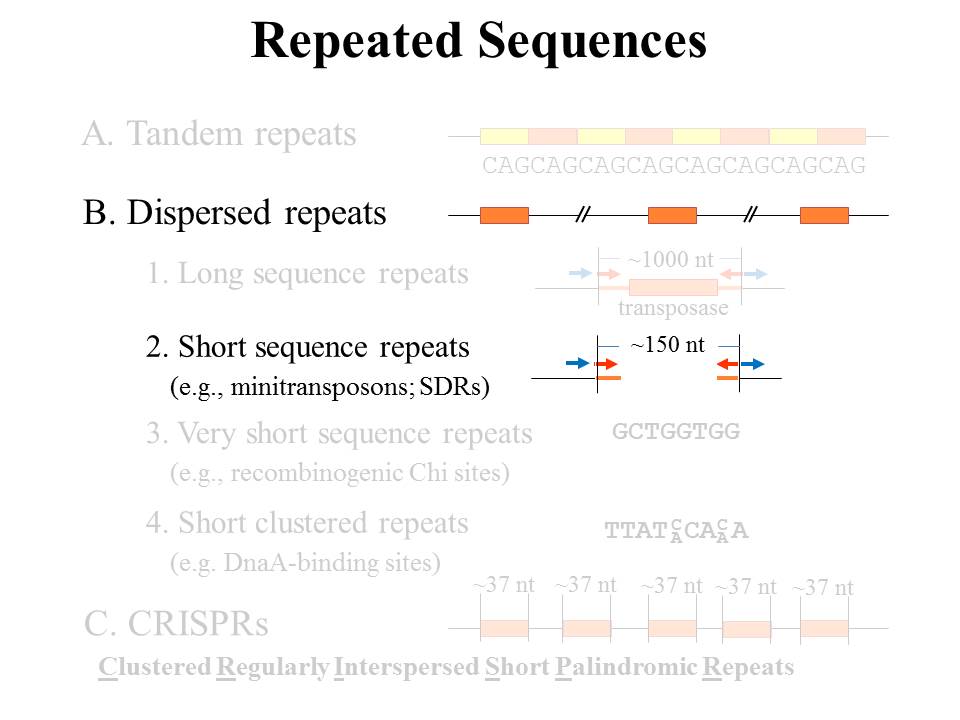Short dispersed repeats, in the range of 20-200 nt, are almost total mysteries. The larger of them may be remnants of full-sized transposons, but this is unlikely to be the case with those that are one or two dozen nucleotides in length, sometimes called SDRs (Small Dispersed Repeats. Some in the latter class appear to be mobile, making them the smallest replicating entities known -- the edge of life. Identifying these sites is certainly of interest, but greater insights can come from comparing them, either within a single genome or amongst several genomes. For example:
...and so forth.
- Where do they occur in the genome? In genes? Downstream from genes? Upstream?
- Are their sequences conserved between different related bacteria?
- How fast do their sequences change in evolutionary time?
- How fast do their positions change in evolutionary time?
- Any evidence as to their mobility?

Articles of possible interest:
- Bachelier S, Clément JM, Hofnung M (1999).
Short palindromic repetitive DNA elements in enterobacteria: A survey
Res Microbiol 150:627-639
- Wilson LA, Sharp PM (2006).
Enterobacterial repetitive intergenic consensus (ERIC) sequences in Escherichia coli: Evolution and implications for ERIC-PCR.
Molec Biol Evol 23:1156-1168.
- Elhai J, Kato M, Cousins S, Lindblad P, Costa JL (2008).
Very small mobile repeated elements in cyanobacterial genomes.
Genome Res 18:1484-1499.Notes of possible interest: